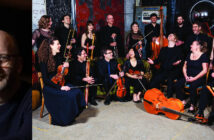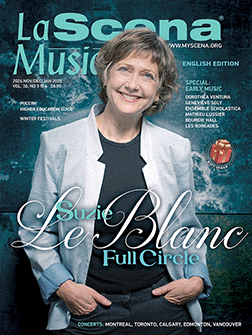
This page is also available in / Cette page est également disponible en:
![]() Francais (French)
Francais (French)
“Classical music is a music of details. The more we advance in our musical learning, the more we become a looking glass, and this, to eventually learn how to forget.”
Vincent Bélanger’s album Pure Cello is above all else a vision. It questions the essence of music, surpassing the borders of a musical culture too often standardized, even imprisoned by a restricted mindset. “I wanted each work to be unique,” the musician states. “If it’s done honestly, if it’s done well and the details are there, people will like it. Do it with honesty. And present your work to the public.”
In fact, when it comes to his dream of creating a living music, loyal to his vision, all of the artist’s energies are invested in this deeply felt passion and this honesty. In this sense, Pure Cello shouldn’t be understood through a critique of its technical virtuosity, but rather should be listened to as a project in and of itself, a project in search of the act of sharing in order that the most listeners can discover the beauty of classical music. “This album allows me to share my vision of the cello,” Bélanger adds.
Vincent Bélanger put two years of work into conceiving and perfecting this repertoire, as much into refining technical details as into developing a unique vision for each work, a vision on one hand loyal to the spirit of the composer and to the musical and historical currents of the time, on the other hand in harmony with the program as a whole. We find a program for unaccompanied cello made up for the most part of forgotten gems, like F.W. Grützmacher’s Elite-Etüden nos. 5 to 8.
The album is produced by Audio Note Music; Vincent Bélanger, in addition to being label’s star artist – a first for a Quebecer on an international label – is also its artistic director. The post was created at the initiative of Peter Qvortrup, CEO of Audio Note, which specializes in making and exporting high quality hi-fi systems. In fact, the production of Pure Cello goes hand in hand with the business’s vision. The album’s production was conceived for 45-RPM vinyl, out of a desire to surpass the limitations of standardization in order to create a unique vision and offer a fresh sound. The production therefore becomes a question of focusing on “micro-details” as these are central to creating an interesting musical experience. The soul of the project lies in creating a new and unique experience for the listener, in making the listener feel and discover the rich colors of classical music. In addition, breaking with a tradition in classical music recording of searching to reproduce the experience of being in the concert hall, the idea here is to plunge the listener directly in the middle of the stage, right by the cellist. In this sense, the project becomes a veritable study of the essence itself of the sound of the cello, and more largely, the essence of music itself.
Bélanger believes his team is the key to realizing his vision. “I have a passionate team. I want us to work together […] to take the classical music listening experience one step further,” he states. “We take the time to talk and ask each other: what’s your vision?” It’s probably this team spirit that makes Pure Cello such an authentic album.
Could classical music, by institutionalizing itself and submitting itself to technical concerns, have abandoned the force of action, of protest and of reflection that brings it to life? As much when listening to the artist’s album as when speaking to the artist himself, we feel an ardent interest, a passion and a dream to create a special forum to communicate his enthusiasm for the music and to create a unique experience for the listener. In this sense, Pure Cello is real and authentic music: the album succeeds the feat of being accessible and captivating to a large public (as much for its repertoire as for the quality of the interpretations), all while staying anchored in the musical traditions inherent to the different eras of the works.
Read a review of Pure Cello here.
This page is also available in / Cette page est également disponible en:
![]() Francais (French)
Francais (French)















